
Non-Contact Devices Put into Use to Reduce Risk of Cross-Infection
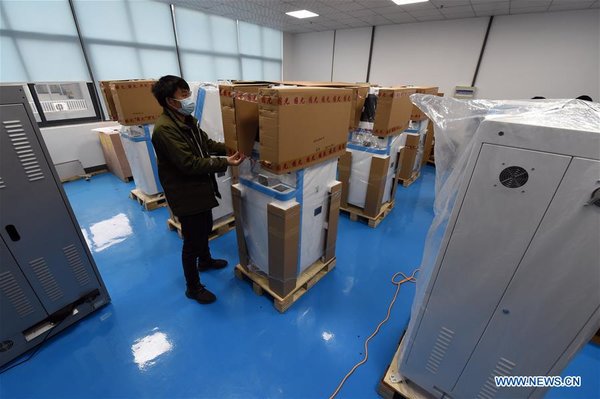
A staff member packs a non-contact self-service machine at the Anhui Easpeed Technology Co. in Hefei, east China's Anhui Province, March 9, 2020. A number of non-contact self-service machines and non-contact elevator buttons have been put into use in many hospitals and office buildings in the city to help reduce the risk of cross-infection in public areas. These devices, taking advantage of a kind of interactive holographic air cast imaging technology, can project elevator buttons and operation interface of self-service machines into the air to enable users to complete operation without touching the real objects. [Xinhua/Zhou Mu]
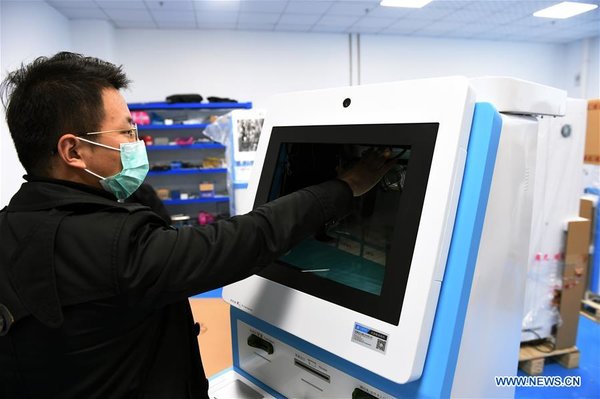
A staff member adjusts a non-contact self-service machine at the Anhui Easpeed Technology Co. in Hefei, east China's Anhui Province, March 9, 2020. A number of non-contact self-service machines and non-contact elevator buttons have been put into use in many hospitals and office buildings in the city to help reduce the risk of cross-infection in public areas. These devices, taking advantage of a kind of interactive holographic air cast imaging technology, can project elevator buttons and operation interface of self-service machines into the air to enable users to complete operation without touching the real objects. [Xinhua/Zhou Mu]
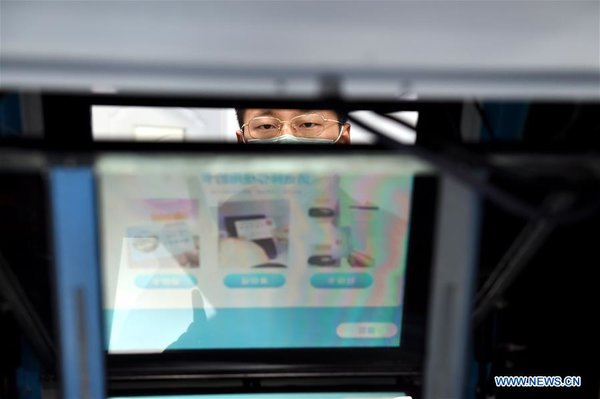
A staff member adjusts a non-contact self-service machine at the Anhui Easpeed Technology Co. in Hefei, east China's Anhui Province, March 9, 2020. A number of non-contact self-service machines and non-contact elevator buttons have been put into use in many hospitals and office buildings in the city to help reduce the risk of cross-infection in public areas. These devices, taking advantage of a kind of interactive holographic air cast imaging technology, can project elevator buttons and operation interface of self-service machines into the air to enable users to complete operation without touching the real objects. [Xinhua/Zhou Mu]
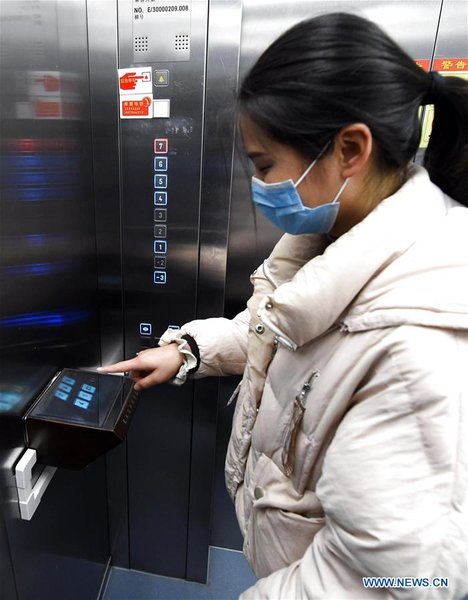
A person uses non-contact buttons to operate an elevator at the First Affiliated Hospital of University of Science and Technology of China in Hefei, east China's Anhui Province, March 9, 2020. A number of non-contact self-service machines and non-contact elevator buttons have been put into use in many hospitals and office buildings in the city to help reduce the risk of cross-infection in public areas. These devices, taking advantage of a kind of interactive holographic air cast imaging technology, can project elevator buttons and operation interface of self-service machines into the air to enable users to complete operation without touching the real objects. [Xinhua/Zhou Mu]
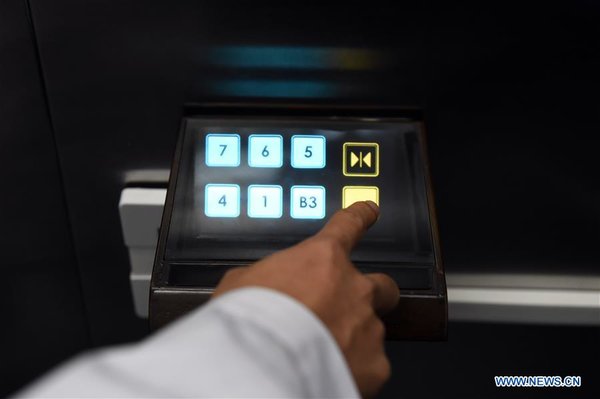
A person uses non-contact buttons to operate an elevator at the First Affiliated Hospital of University of Science and Technology of China in Hefei, east China's Anhui Province, March 9, 2020. A number of non-contact self-service machines and non-contact elevator buttons have been put into use in many hospitals and office buildings in the city to help reduce the risk of cross-infection in public areas. These devices, taking advantage of a kind of interactive holographic air cast imaging technology, can project elevator buttons and operation interface of self-service machines into the air to enable users to complete operation without touching the real objects. [Xinhua/Zhou Mu]

A patient uses a non-contact self-service machine at the First Affiliated Hospital of University of Science and Technology of China in Hefei, east China's Anhui Province, March 9, 2020. A number of non-contact self-service machines and non-contact elevator buttons have been put into use in many hospitals and office buildings in the city to help reduce the risk of cross-infection in public areas. These devices, taking advantage of a kind of interactive holographic air cast imaging technology, can project elevator buttons and operation interface of self-service machines into the air to enable users to complete operation without touching the real objects. [Xinhua/Zhou Mu]
(Source: Xinhua)
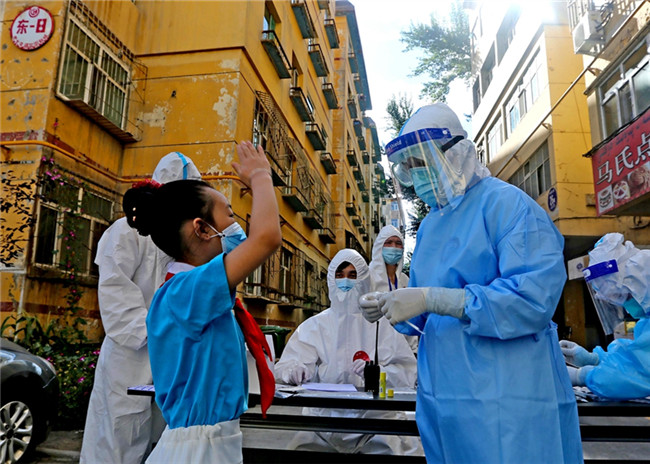 Women Medics in NW China's Xinjiang Contribute to COVID-19 Epidemic Containment
Women Medics in NW China's Xinjiang Contribute to COVID-19 Epidemic Containment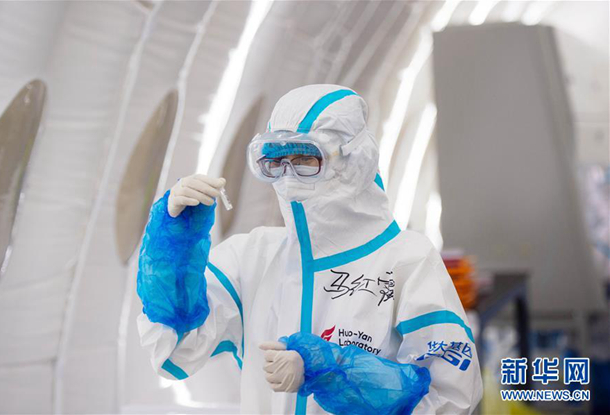 Women CPC Members on Front Line of Anti-COVID-19 Battle in Beijing
Women CPC Members on Front Line of Anti-COVID-19 Battle in Beijing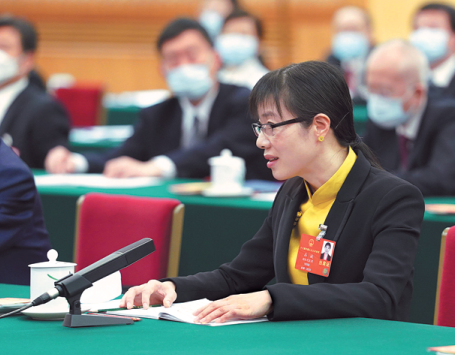 Deputy Recalls Role in COVID-19 Fight
Deputy Recalls Role in COVID-19 Fight- Woman Epidemiological Researchers Race Against the Clock on Front Line
 Pic Story of Nurse Who Aided COVID-19 Fight in Wuhan
Pic Story of Nurse Who Aided COVID-19 Fight in Wuhan Volunteer Provides Milk Tea, Back up Anti-Epidemic Workers in NE China
Volunteer Provides Milk Tea, Back up Anti-Epidemic Workers in NE China

 京公网安备 11010102004314号
京公网安备 11010102004314号